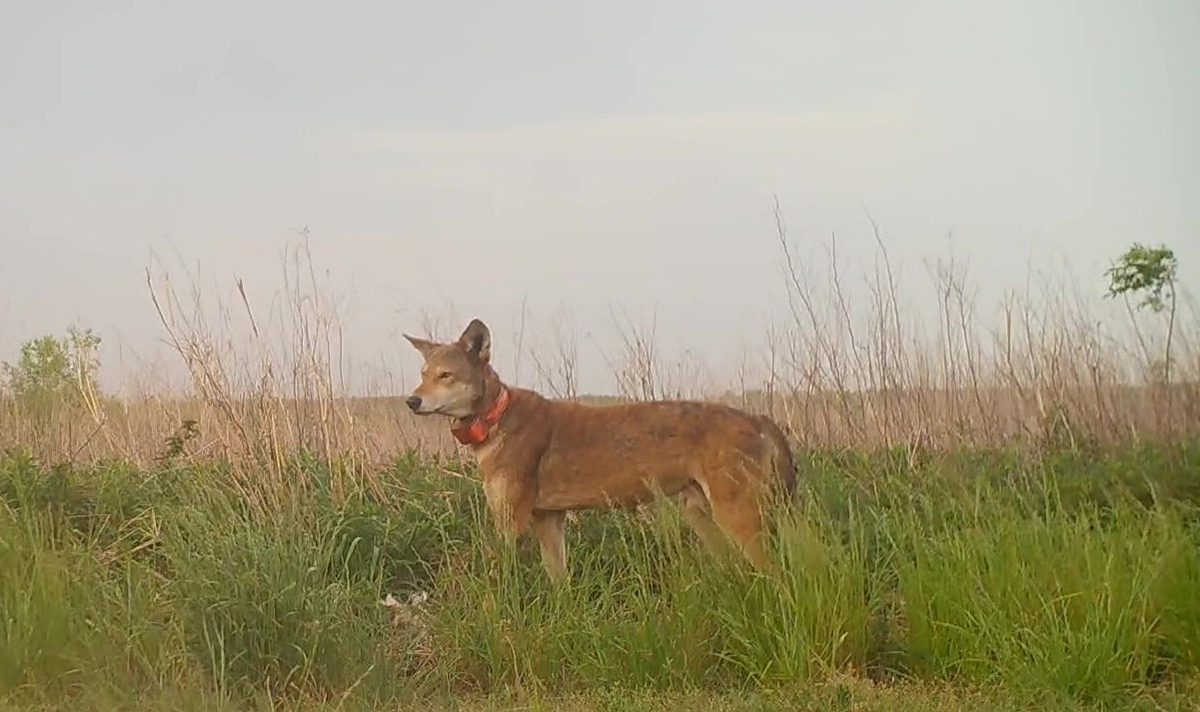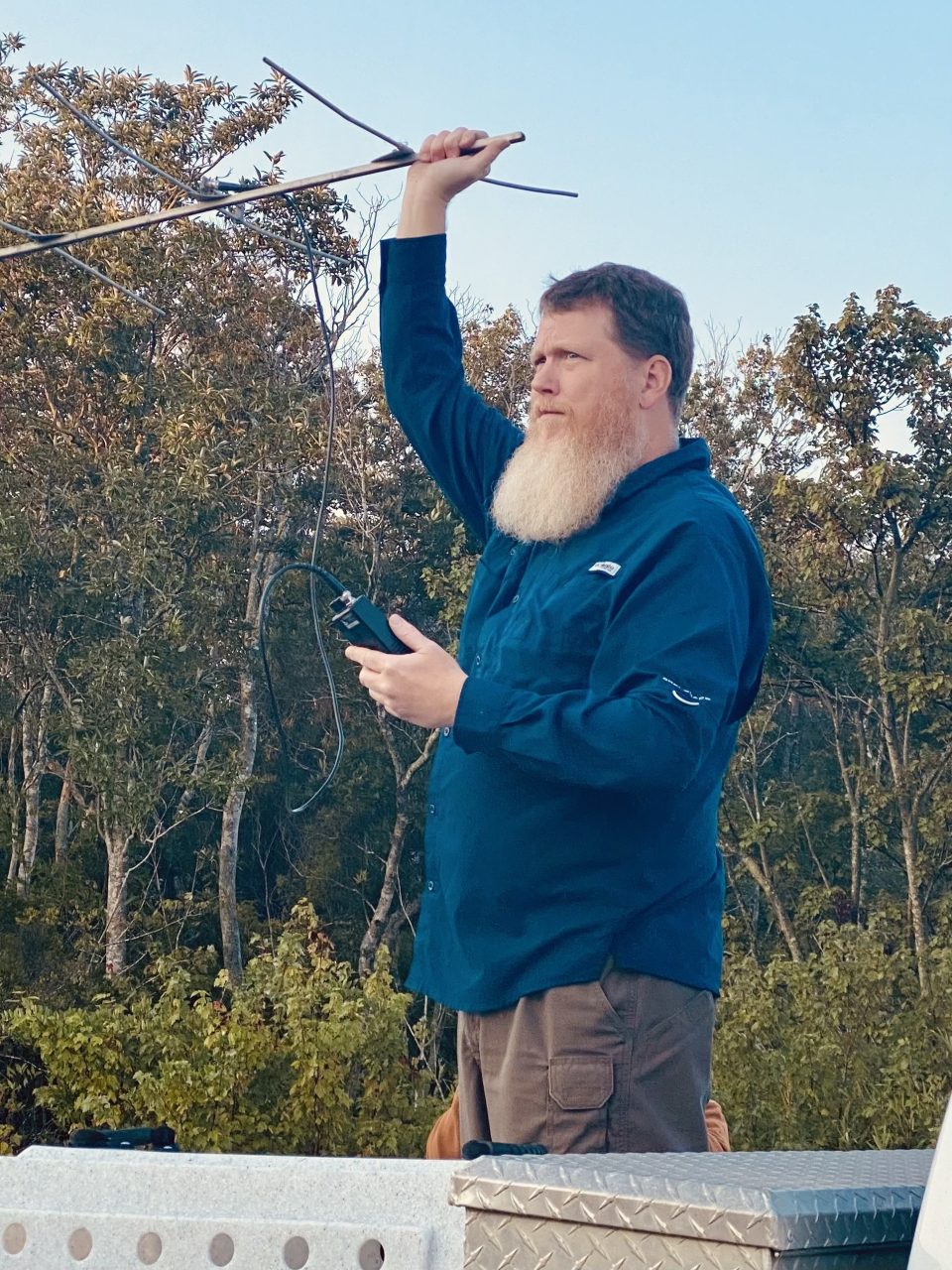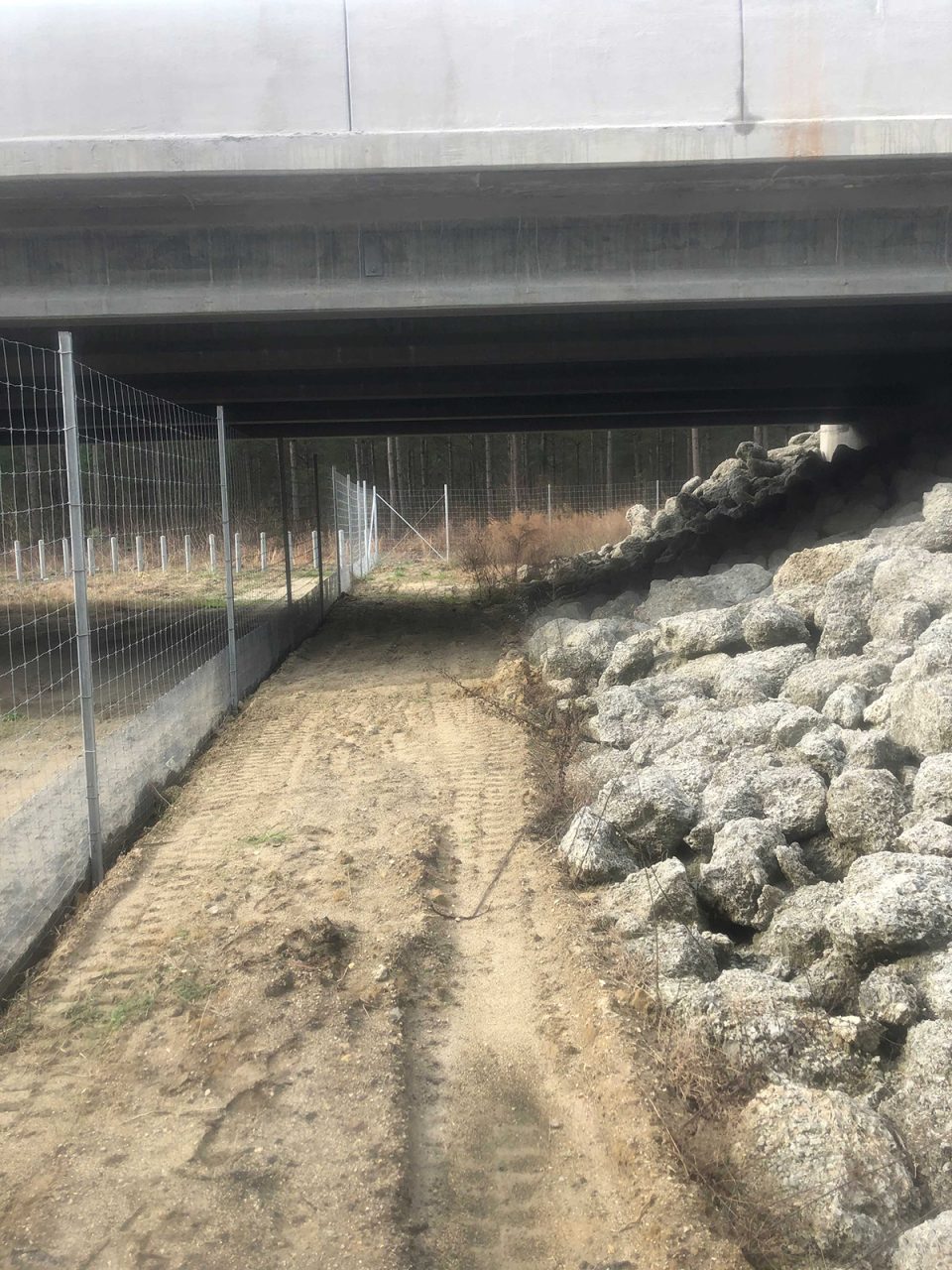
Second of two parts. Read Part 1.
EAST LAKE — Before guardrails were installed about 20 years ago along U.S. Highways 64 and 264 in rural northeastern North Carolina, residents avoided driving at night in fear of striking a large animal and then sliding unseen into the abyss of a roadside canal.
Supporter Spotlight
Even now, with the barriers in place, locals know to drive with caution through the dark wilds of Alligator River National Wildlife Refuge, scanning the edge of the forest for glowing eyes or sudden movements of creatures on night hunts — raccoon, possum, bobcat, fox, bear, deer, coyotes and red wolves.
Vehicle strikes are a serious hazard to humans and animals, but they can be especially devastating to the recovery of the endangered wolves that number only about 22 in the wild, 18 of which are collared and within the 1.7-million-acre management area encompassing public and private land in Beaufort, Dare, Hyde, Tyrrell and Washington counties.
When a wild red wolf is killed, the loss can destroy the cohesion of a pack, creating a negative impact on reproduction that is so critical to the species’ survival.
Last year, for example, in two separate instances, wolves from the same pack were struck and killed on U.S. 64, said wildlife biologist Joe Madison, manager for the U.S. Fish and Wildlife Service’s Red Wolf Recovery Program.
Madison told Coastal Review that one of the males and one of the pups were killed. “So that family group kind of got messed up, and we ended up capturing and placing the female for that family group back in captivity.”
Supporter Spotlight

With the loss of her mate, Madison explained, the female had started wandering to a different area and creating issues, such as getting into chickens that made her no longer suitable for the wild. “But it was going well until that mortality of the male and one of the pups, and then it kind of went downhill from there.”
After years of study in the early 2000s, the North Carolina Department of Transportation had developed plans to construct numerous wildlife crossings along U.S. 64 in Dare and Tyrrell counties as part of a proposed 27.3-mile-long road widening and bridge-replacement project. The department has since dropped the widening project, but $110 million provided recently by the Bipartisan Infrastructure Law allowed NCDOT to replace the 60-year-old Lindsey C. Warren Bridge over Alligator River. That $270 million project, which began this spring, will include wildlife crossings and under-road tie-ins at both ends of the bridge.
But it’s not enough, conservation groups say. Granted, more wildlife crossings would be costly to build in Alligator River’s swampy land, but considering the enormous investment that’s been put into the life of each red wolf in the interest of restoration of a unique species, these groups contend they’re worth it.
“That’s why one of the things we’re stressing this year is trying to make progress on getting (assistance from) NCDOT, who’s making great strides in the wildlife road crossings department,” Ron Sutherland, chief scientist at the nonprofit Wildlands Network, told Coastal Review recently. “We want them to try to put in for federal grants to build wildlife crossings and fencing on 64 through the refuge in particular.”
Sutherland had connected with an anonymous donor who recently pledged $2 million in matching funds for a grant to fund wildlife crossings in the refuge to protect red wolves, and the nonprofit Center for Biological Diversity stepped in to help raise the match, he said in recent email.
“I’m working directly with NCDOT to try to bring a big proposal for U.S. 64 to Federal Highways, which can only happen if we have enough nonfederal matching funds to work with, he said, adding that the state would have to provide a 20% match to the Federal Highway Administration money.
Although the costs versus benefit of keeping red wolves away from vehicle tires is clear, he said, wildlife crossings through a refuge teeming with wildlife would provide plenty of benefits to every creature dashing, hopping, galumphing, scurrying, slithering or crawling across the highway.
“That stretch of Highway 64 through the refuge and through the Alligator River game lands, it’s got to be up there in terms of national priorities for reducing roadkill in terms of the sheer numbers of wildlife,” Sutherland said. “There were like tens of thousands of dead animals that they recorded in the DOT-funded study. And so it’s definitely not just the wolves, but bears and deer and bobcats and so many turtles, so many snakes … that I’ve seen dead on that road. Nobody wants to see that.”
According to the draft environmental impact statement for the then-proposed widening project, 36% of all crashes and 77% of night crashes on the two-lane road were because of animals. Five crashes occurred within a milelong stretch in Tyrrell County about a mile west of the bridge.
Between July 1996 to June 1999, the fatal crash rate for the project area was 4.13 crashes per 100 motor vehicle miles. After the guardrails were installed along the canals on U.S. 64, the fatal crash rate went down to 1.02 per 100 miles.
The proposed widening had called for about 11 overpasses or underpasses and dozens of smaller structures for amphibians, reptiles and small mammals. Four wildlife crossings that were installed decades ago off U.S. 64 between Columbia and Plymouth had been shown to be about 90% effective, a U.S. Fish and Wildlife Service biologist had said in 2013. Designed with 6- to 8-foot-high fences at the road edge and both sides of the opening, the fence corrals animals toward underpasses, culverts or a bridge.

Travis Wilson, a biologist with the North Carolina Wildlife Resources Commission Habitat Conservation Division, said that the east and west sides of the proposed 3.2-mile Alligator River bridge replacement will be lengthened to accommodate culverts for fencing and wildlife passage.
Based on his years of monitoring the commission’s wildlife crossings, Wilson said he expects that all species will use the passages, although white-tailed deer tend to be more skittish.
“I have documented most every large mammal, medium-sized mammal, in North Carolina using culverts fairly frequently, from black bear to coyotes, on down,” he told Coastal Review.
If funding is found for additional crossings beyond the bridge, he said they would be designed in different sizes for different species. Vegetation at the crossings, and the fencing would need to be maintained, and some areas in front of passages would need a timber pole “bridge” over a canal.
“That’s really what the crossings are there for,” he said. “It’s not for a single species — it’s to reduce wildlife mortality by vehicles … to make the highway more permeable to all wildlife.”
While the recovery team would welcome wildlife crossings, the staff’s focus will remain on keeping wild-born and captive-bred wolves who have been introduced into the wild away from any human interactions and activity whatsoever. The less habituated wolves are to humans, the better for both species. The staff also takes pains to minimize contact as much as possible, Madison said, and when handling is necessary, it is done as gently as possible, with voices low and no petting.
In addition to using a hand-held antenna to keep track of the collared wolves, which wear lightweight GPS devices on reflective collars, or for some, smaller VHF radio devices, there are more than 55 remote sensing cameras to see who is where and when.
GPS collars, which cost about $2,000 and weigh 1.3 pounds, cannot exceed 4% of the animal’s body weight. The VHF collars are lighter but don’t send points from satellites.
A red wolf known as No. 2191 was recently sighted in the Milltail area of the Alligator River refuge. Madison said that the young male’s fear of people gives him a better chance to avoid becoming one of the unfortunate number of casualties suffered by red wolves from too-close encounters with people.
Madison held a small radio telemetry antenna during a visit to the Milltail area in late April. A steady beep revealed that the wolf — or more specifically his GPS collar — was close but too far away to see without field glasses. The wolf was born at Wolf Haven International in Washington state, one of the 50 zoological institutions and wildlife centers that participate in the captive-breeding program that is critical to repopulating the species in the wild.
When 2191 — the animals purposely are not named — was deemed ready for life in the wild, he was transferred to Alligator River.
“They did an excellent job,” Madison said, referring to Wolf Haven, “because he wants nothing to do with people.”
After his arrival, 2191 was placed in an acclimation pen before being released on Jan. 29 to meet a female who had come into heat, “in the hopes that they could become a pair,” said Madison.

The good news is that it appears that the handsome wolf is the father of a litter of eight pups born in the refuge in May. It’s the third year in a row that the Milltail pack has produced a litter, and this was the first sired by 2191. The previous breeding male that had sired two litters was killed by a vehicle last year.
Madison said he understands why zoos and conservation centers name the wolves, but it’s against the recovery team policy. The studbook number that is assigned to each animal identifies them in sequence that is vital management information.
American red wolves once had an enormous range in the Southeast and along the Gulf Coast. But because of habitat loss and hunting, the population collapsed. The red wolf was listed as endangered in 1973 and declared extinct in the wild in 1980. In 1987, four pairs of captive-bred wolves were released at Alligator River refuge.
Innovative management practices, such as pup fostering and coyote sterilization programs, grew the population, and by 2010, there were about 130 red wolves in the wild. But politics and funding shortages led to management cuts, and the population plummeted to seven before a federal judge ordered the program to resume in 2021.
Starting over has had its challenges. When 11 captive-born wolves were released in 2022, three wound up dead from gunshots and five were killed by vehicles. In the last year alone, four wolves have been killed by vehicles.
Still, the new litters provide hope, and the restored pup fostering practice — where a captive-born pup is slipped into a wolf den with a litter of pups about the same age — has been successful. So has the renewed coyote sterilization program, which allows hormonally-intact coyotes to hold territory, keep out fertile coyotes and prevent hybrids.
From November until March, the recovery team is kept busy doing captures to collar older pups, perform health check on the mature wolves and sterilize coyotes. There are 16 pens in the Sandy Ridge area, each double-fenced, but only 13 are currently usable. Interns and other staff enter the pen to water and feed the wolves and check on them. At that point, the wolves either go to the farthest distance and pace, or they go to their den box. The never try to escape.
“They don’t want to come near you,” Madison said. “They’re very nonaggressive.”
The pens are especially useful in letting wild wolves visit the captive wolves and start making friends. Recovery staff can watch with the remote-sensing cameras for signs that courtship may be blooming. Once they’re let free, all bets are off.
“We’ve had bonded pairs that came from captivity,” Madison recalled. “They were bonded in captivity, had had previous litters together, they had a litter in the pen, and they still left each other when we opened it up. It was like, ‘Now that I have options, you ain’t it!’”
Sutherland said that he is encouraged that the red wolf population is rebounding and that wildlife crossings are a critical component in its recovery. Healthy numbers of red wolf packs also would go far in pushing out a lot of the opportunistic coyotes and raccoons that swooped into vacated wolf territories, he said.
As they’ve done out west, he said, wolves can keep other species in check not just by eating them, but also by creating a climate of fear that works for the good of the entire ecosystem.
“So that’s the value of having the wolves back,” he said. “Not only are they the only thing that seems to control coyotes, but they also do kill the raccoons and we think that’s important from the standpoint of bird populations.”
“The red wolf was a success story of the Endangered Species Act, and it’s been saved from extinction,” Sutherland said. Now the question is whether the program can rebuild, without the apex predator being plowed down on a strip of asphalt.
Note: Coastal Review will not publish Wednesday in observance of Juneteenth National Independence Day, a federal holiday.







